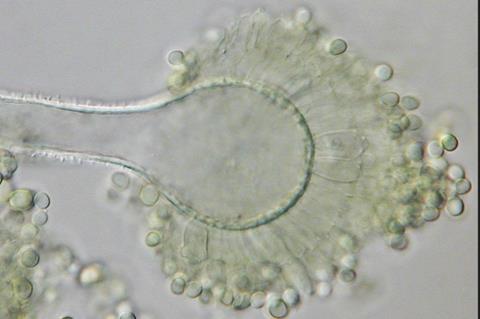In a study published in Mycology, Professor Kong Qing’s team from the School of Food Science and Engineering at Ocean University of China investigated the mechanisms by which the Rho GTPases Cdc42 and RacA regulate aflatoxin synthesis and pathogenicity in the fungus Aspergillus flavus. Their research revealed that these processes are controlled through the regulation of morphogenesis, oxidative balance, and energy metabolism.

Rho GTPases Cdc42 and RacA share significant sequence homology and are conserved among eukaryotic species. These proteins act as molecular switches in various signal transduction pathways by cycling between GTP-bound (active) and GDP-bound (inactive) states. However, their specific functions in A. flavus remain understudied.
READ MORE: Kenyan crop contamination outbreak inspires grad student to improve rice storage
The research team developed a CRISPR/Cas9 system utilizing 5S rRNA and tRNA-gRNA tandem arrays, achieving over 95% single gene editing efficiency and 75% dual gene editing efficiency. Phenotypic and transcriptome analyses revealed significant functional redundancy between cdc42 and racA.
Conidial germination
The researchers found that conidial germination was significantly accelerated in the mutants, with early germination driven by increased hydrolase activity and ATP levels. Loss of cdc42 or racA resulted in reduced pathogenicity, impaired cell wall integrity, reduced aflatoxin production, and disrupted oxidative systems.
These proteins regulate the generation of reactive oxygen species (ROS) by interacting with NoxR, the regulatory subunit of NADPH oxidase (Nox). Cdc42 and RacA play opposing roles in fatty acid β-oxidation and pyruvate metabolism. Simultaneous loss of function of both genes is lethal, as evidenced by the inability of the ∆cdc42racAtetOn mutant to grow in medium lacking doxycycline.
This study reveals the critical roles of the closely related genes cdc42 and racA in the growth, development, and metabolism of A. flavus. These findings provide potential targets for mitigating the harmful effects of A. flavus and aflatoxins.







No comments yet